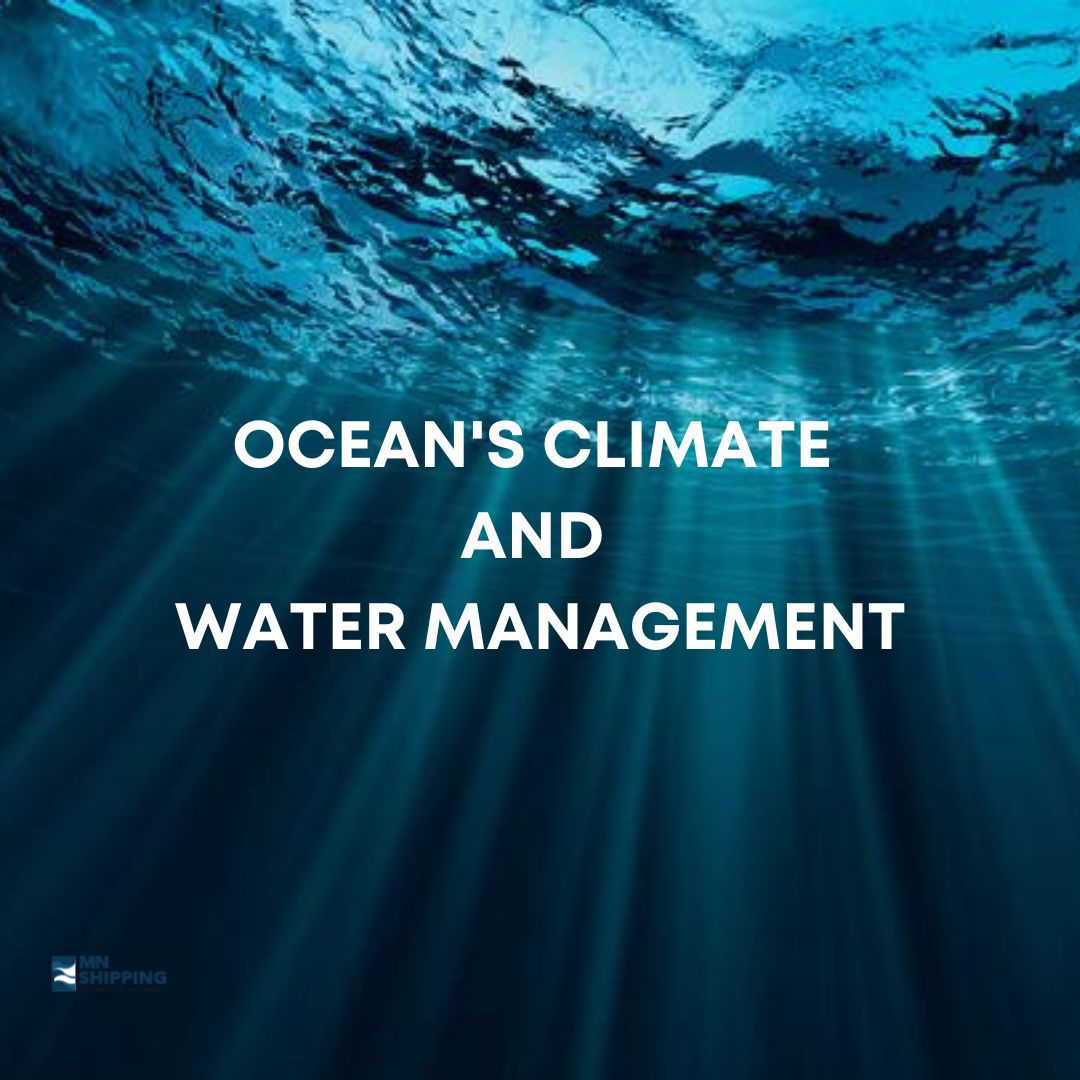Oceans’ Climate and Water Management
With climate change looming over our every aspect of the environment, it is no surprise that it also impacts our oceans.


Role oceans play in climate adaptation
Our Earth’s oceans are one of our greatest allies in the fight against climate change and its dangerous consequences. They mediate temperatures and drive the weather, determining rainfall, droughts, and floods, playing a big role in mitigating weather extremes. Oceans also help us humans in generating oxygen, producing the food we eat and storing the excess carbon dioxide we generate.
Indeed, they are the world’s largest store of carbon, as an estimated 83% of the global carbon cycle is circulated through marine waters. In fact, oceans are known to be a “carbon sink”, absorbing between 23% and 30% of man-made CO2 emissions. Since the Industrial Revolution, the amount of carbon dioxide in our atmosphere has increased by over 35%, primarily from the burning of fossil fuels. Important ecosystems such as mangroves and coral reefs, as well as tidal marshes and seagrass meadows, all sequester and store more carbon per unit area than forests. Moreover, ocean waters, ocean animals, and ocean habitats all help the ocean absorb a big portion of the carbon dioxide emissions from human activities.
At the same time, our oceans function as a heat reservoir, having absorbed up to 93% of the heat emitted since the Industrial Revolution.
Indications of ocean’s climate change and consequences
Unfortunately, climate change has had an enormous impact on our oceans’ health.
The damaging effects of greenhouse gas emissions have threatened coastal and marine ecosystems through changes in ocean temperature and melting of ice, which in turn affect many aspects of ocean health like ocean currents, weather patterns, and sea levels.
And, since the carbon sink capacity of the ocean has now been exceeded, the ocean’s chemistry has changed drastically. In fact, it’s been shown that mankind has increased the acidity of our ocean by 30% over the past two hundred years.
Other effects of air and water temperature warming include many catastrophic changes such as seasonal shifts in species, coral bleaching, sea level rise, coastal inundation, coastal erosion, harmful algal blooms, hypoxic (or dead) zones, new marine diseases, loss of marine mammals, changes in levels of precipitation, and fishery declines.
In addition, the Monterey Bay Aquarium has found that since 2014, more than half of the world’s ocean surface temperature has consistently surpassed the historic extreme heat threshold. In 2019, 57% of the global ocean surface water recorded extreme heat. Sea-levels have risen 6 to 8 inches globally, likely due to postglacial rebound, changes to the Atlantic Ocean circulation, and the melting of the Antarctic Ice Sheet.
What’s next? Is water management the answer?
This global threat needs to be addressed by the world all together, as there is no hope of redressing the damage done of the world’s governments don’t unite and work hand in hand. Fortunately, more than 100 countries responsible for 90% of global emissions have agreed with this premise and committed to improve ocean health via the Paris Agreement. These countries have agreed to protect the ocean and accelerate climate ambition, focus on CO2 reductions, understand and protect ocean ecosystem-based carbon dioxide storage, and pursue sustainable ocean-based adaptation strategies.
By helping governments to acknowledge that climate change poses risks to the financial market stability, it has been shown that the problem requires that all aspects of government work together. Financial institutions must conduct climate stress tests, banks must assess and disclose climate risks – such as carbon emissions from their lending and investment activities – and integrate climate risk into community reinvestment processes, particularly in low-income communities.
Another big project has been implemented by the World Bank, called the Blue Economy approach, which focuses on the sustainable and integrated management of coastal and marine areas in healthy oceans. This project supports governments in their efforts to improve fisheries, address marine pollution, manage coastal resources, and limit the impacts of key sectors such as tourism, maritime transport and offshore renewable energy on ocean health.
Finally, there are many large-scale geoengineering projects being presented by scientists across the globe, which include renewable offshore energy, the sequestration of carbon, algae biofuel, regenerative ocean farming renewable energy, shipping and transport changes, protection and restoration of coastal and marine ecosystems, creating sustainable fisheries and aquaculture, shifting diets and consumption habits and reducing and managing marine plastic pollution.

Leave a Reply